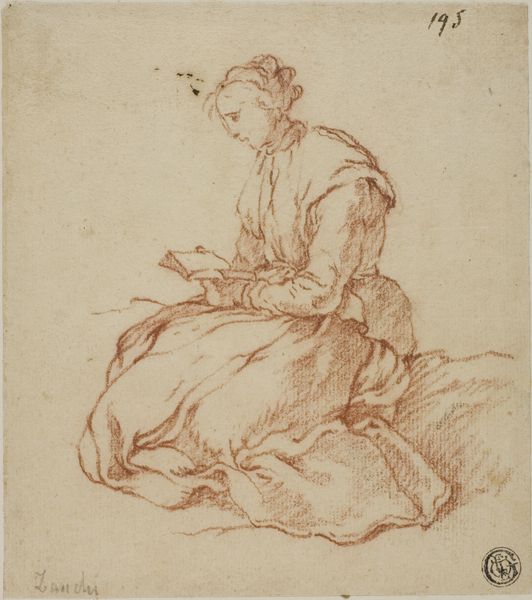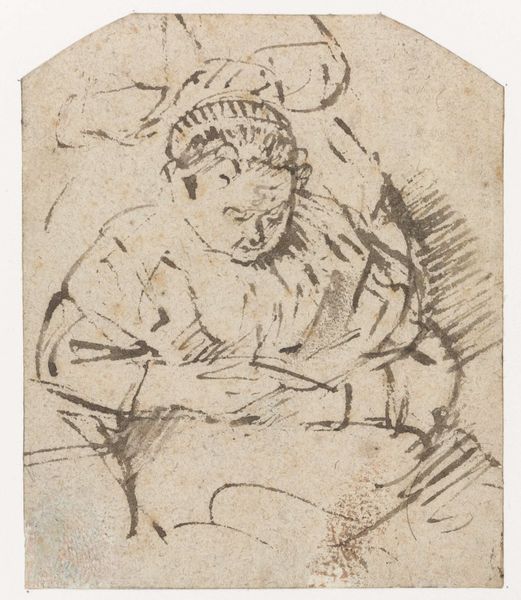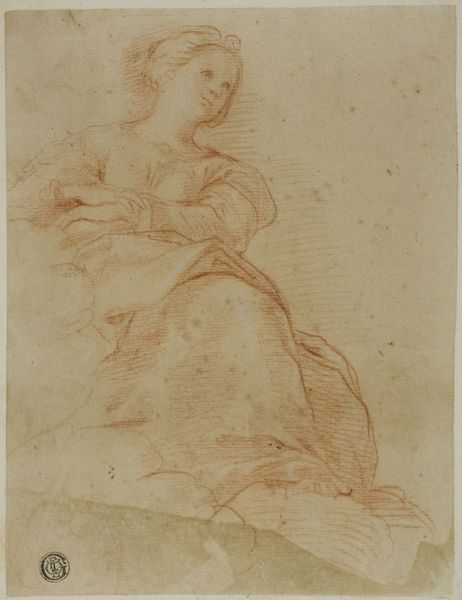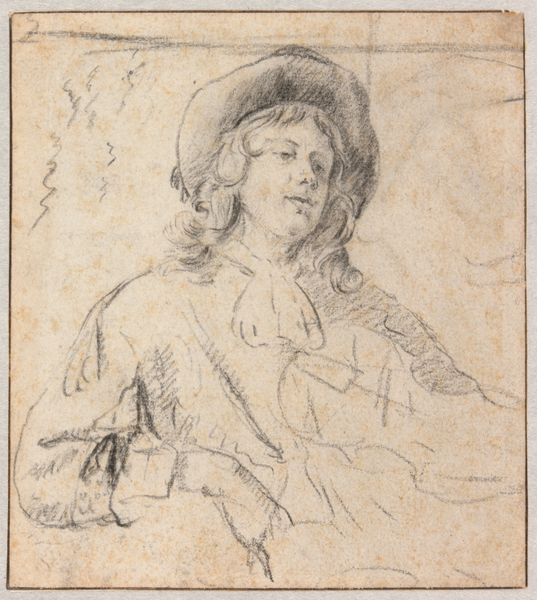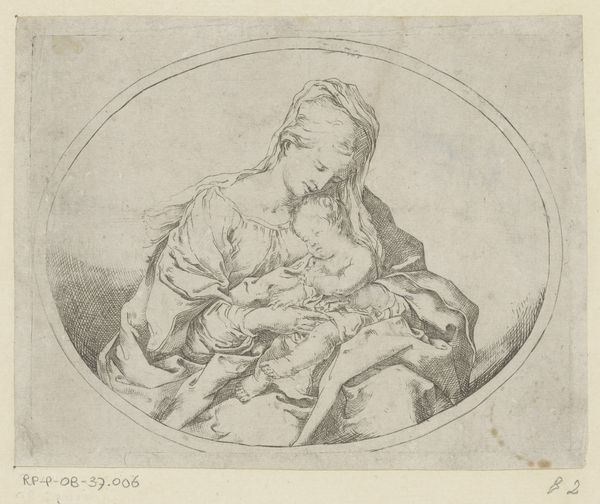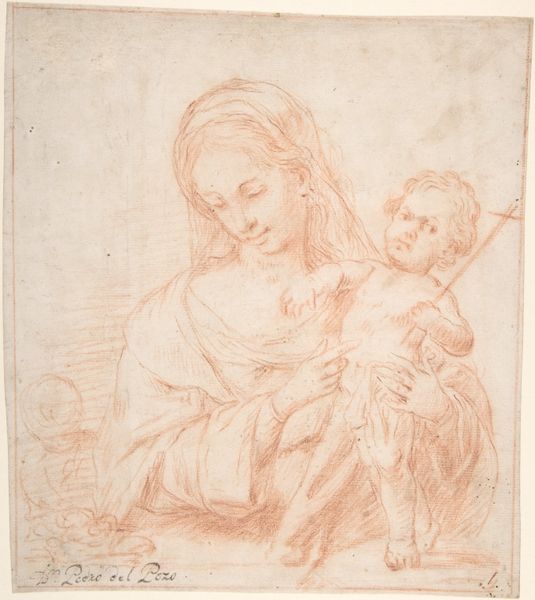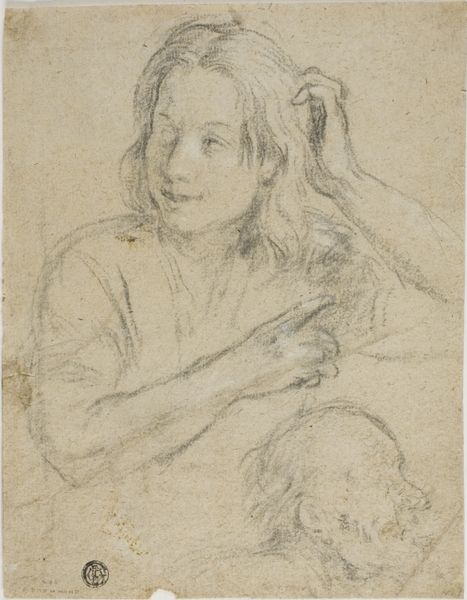
A Woman Asleep (recto); Landscape Composition with Well-Sweep (verso) 1633 - 1636
0:00
0:00
drawing, paper, pencil
#
portrait
#
drawing
#
baroque
#
dutch-golden-age
#
paper
#
pencil
#
nude
Dimensions: 4 3/4 x 6 9/16 in. (12.1 x 16.6 cm)
Copyright: Public Domain
Curator: Take a moment to observe Govert Flinck's double-sided drawing, "A Woman Asleep (recto); Landscape Composition with Well-Sweep (verso)," dating from around 1633 to 1636. It's a Dutch Golden Age piece rendered in pencil on paper. Editor: My immediate impression is one of serene melancholy. The woman's pose seems so burdened, almost collapsing inward. Is it sleep or despair? It's beautifully ambiguous, don't you think? Curator: Absolutely. Flinck masterfully captures the weight of emotion with such minimal means. Look at the soft hatching; the way the lines define form and shadow is deceptively simple. The sleeping nude was a common motif, but Flinck elevates it. Editor: I agree about his artistic mastery with line. The structural economy and semiotic implications here seem endless. He achieves so much affect with so few choices. In some ways, he is on par with one of his teachers Rembrandt Curator: He was definitely very influenced by Rembrandt’s teaching style. While this study might not have been preparatory, such depictions were usually deployed during his time. Think of it, perhaps it would later be placed within a grand history painting. Editor: Ah, true, a springboard for something larger. That reminds us not to isolate our focus, that works, much like ourselves, almost never appear *sui generis*. I will definitely check to see where some of this style appeared in Flinck's historical work later. Curator: This simple image reminds me of all the half-formed ideas swirling about inside us, the feelings we haven't yet fully realized, captured in the guise of simple rest. Editor: I find it quite remarkable that one is often looking at a finished drawing while staring into artistic incubation and possibility. What do you think you would place it inside of if it were up to you?
Comments
No comments
Be the first to comment and join the conversation on the ultimate creative platform.
